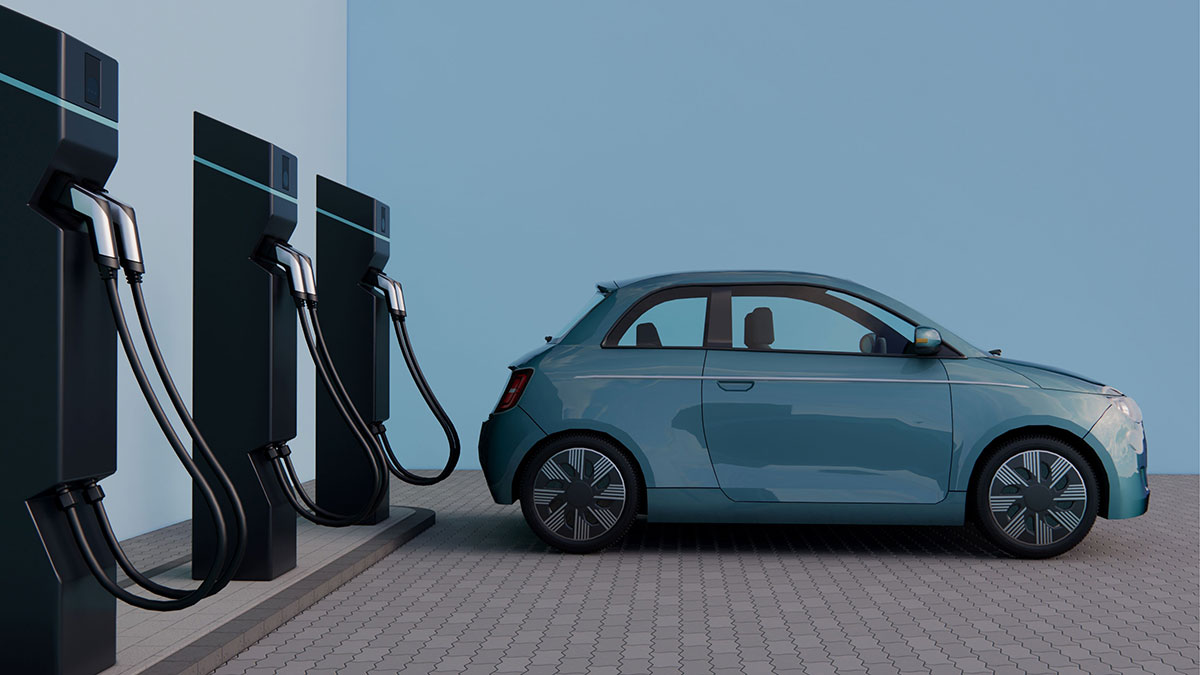- Electric Car Shipments to Total 17.9 Million Units in 2024.
- By 2027, BEV Prices to Reach Parity with ICE Vehicles of Similar Size and Configuration.
- By 2030, More Than Half of All Vehicle Models That an Automaker Markets Will Be Electric Vehicles.
Nearly 15 million electric cars (battery electric and plug-in hybrid) are expected to be shipped worldwide in 2023, according to the latest forecast by Gartner, Inc. Shipments of electric cars are estimated to increase 19% in 2024, to total 17.9 million units.
Gartner forecasts that shipments of all electric vehicles (EVs) – cars, buses, vans and heavy trucks – will total 18.5 million units in 2024, with electric car shipments will representing 97% of total EV shipments next year (see Table 1).
Table 1. Electric Vehicle Shipments by Vehicle Type, Worldwide, 2022-2024 (Actual Units)
|
|
2022 Shipments |
|
2023 Shipments |
|
2024 Shipments |
|
| Car |
|
11,128,805 |
|
14,975,296 |
|
17,855,428 |
|
| Bus |
|
198,731 |
|
202,733 |
|
207,845 |
|
| Van |
|
137,668 |
|
218,337 |
|
349,950 |
|
| Heavy Truck |
|
22,595 |
|
30,162 |
|
39,349 |
|
| Total |
|
11,487,798 |
|
15,426,529 |
|
18,452,573 |
|
Source: Gartner (September 2023)
Globally, battery electric vehicles (BEV) shipments are forecast to grow from 9 million units in 2022 to 11 million units by the end of 2023. Plug-in hybrid electric vehicles (PHEVs are expected to grow at a slightly slower rate, from 3 million units in 2022 to 4 million units in 2023.
“The proportion of PHEV, as a percentage of total EVs in countries like the U.S., Canada and Japan will slightly grow as consumers in those countries prefer PHEVs to BEVs. U.S. consumers who are transitioning from a pure internal combustion engine (ICE) car are choosing to adopt PHEVs over their BEV counterparts because PHEVs combine the ability to deliver emission free urban driving, with the convenience of gasoline powered propulsion for longer journeys,” said Jonathan Davenport, Sr Director Analyst at Gartner. “The situation is different in Western Europe, China and to a lesser extent India, where consumers favor BEV’s lower overall running costs, quieter driving experience and green credentials.”
EV Models to Represent Over 50% of Car Maker Models by 2030
Governments’ decisions to reduce particulate matter emissions from vehicles and some country-level initiatives, such as implementing legislation to only allow the sale of zero-emission vehicles and seeking to enforce PHEV as a minimum, led to changes in automaker behaviors. Some automakers are looking to eliminate tailpipe emissions from new light-duty vehicles by 2035 and others are aspiring to achieve sales of 40% to 50% of annual U.S. volumes of electric vehicles by 2030. In addition, the growing importance of EVs has led to new market entrants launching EV platforms.
“Ever-tightening emission regulations will lead automakers to pivot more than half of the vehicle models marketed to EVs by 2030,” said Davenport.
By 2027, BEV Prices to Reach Parity with ICE Vehicles of Similar Size and Configuration
Gartner analysts expect that by 2027, the average price of a BEV will reach parity with ICE vehicles of similar size and configuration, which will accelerate the global adoption of EVs. However, by 2030, power generation and network capacity have the potential to act as inhibiting factors to mass EV deployment regardless of price.
“Unless countries take actions to incentivize EV drivers to charge outside peak electricity consumption periods, the switch to EVs may put an additional strain on both the power generation capacity and the distribution infrastructure,” said Davenport.
“Using dual day and night or even half-hourly electricity tariffs can incentivize EV drivers to charge outside peak times, which would require a mass roll-out of smart metering,” added Davenport. “Likewise, the ability of utilities to control EV chargers directly via application programming interfaces (APIs) would enable EV charging to be momentarily curtailed at peak consumption times to ensure grid demands weren’t exceeded.”
- ในปี 2567 ยอดจัดส่งรถยนต์ไฟฟ้าจะเพิ่มเป็น 17.9 ล้านคัน
- ในปี 2570 รถยนต์ไฟฟ้าแบตเตอรี่ (BEV) จะมีราคาเทียบเท่ารถเครื่องยนต์สันดาป (ICE) ในขนาดและรูปร่างคล้ายกัน
- ในปี 2573 มากกว่าครึ่งหนึ่งของรถยนต์ทุกรุ่นที่ผลิตออกมาจะเป็นรถยนต์ไฟฟ้าped in 2023
การ์ทเนอร์คาดการณ์ยอดการจัดส่งรถยนต์ขับเคลื่อนด้วยพลังงานไฟฟ้าทั่วโลก (แบบใช้พลังงานจากแบตเตอรี่และแบบปลั๊กอิน-ไฮบริด) ในปี 2566 มีปริมาณเกือบ 15 ล้านคัน และคาดว่าจะเพิ่มขึ้นอีก 19% ในปี 2567 คิดเป็นยอดรวม 17.9 ล้านคัน
การ์ทเนอร์คาดการณ์ว่า ในปี 2567 ปริมาณการจัดส่งยานยนต์ไฟฟ้า (EV) ทั้งหมด ตั้งแต่ รถยนต์ (Cars) รถโดยสาร (Buses) รถตู้ (Vans) และรถบรรทุกขนาดใหญ่ (Heavy Trucks) จะมียอดรวมที่ 18.5 ล้านคัน โดยในกลุ่มรถยนต์ไฟฟ้าจะคิดเป็น 97% ของยอดการจัดส่งยานยนต์ไฟฟ้าทั้งหมดในปีหน้า (ดูตารางที่ 1)
ตารางที่ 1: ปริมาณการจัดส่งยานยนต์ไฟฟ้าทั่วโลก ปี 2565-2567 (หน่วยตามจริง)
| |
|
ยอดจัดส่ง ปี 2565 |
|
ยอดจัดส่ง ปี 2566 |
|
ยอดจัดส่ง ปี 2567 |
|
| รถยนต์ |
|
11,128,805 |
|
14,975,296 |
|
17,855,428 |
|
| รถโดยสาร |
|
198,731 |
|
202,733 |
|
207,845 |
|
| รถตู้ |
|
137,668 |
|
218,337 |
|
349,950 |
|
| รถบรรทุกขนาดใหญ่ |
|
22,595 |
|
30,162 |
|
39,349 |
|
| Total |
|
11,487,798 |
|
15,426,529 |
|
18,452,573 |
|
ที่มา: การ์ทเนอร์ (กันยายน 2566)
การ์ทเนอร์คาดว่ารถยนต์ไฟฟ้าแบตเตอรี่ (BEV) ทั่วโลกจะเติบโตจาก 9 ล้านคันในปี 2565 เพิ่มเป็น 11 ล้านคัน ภายในสิ้นปี 2566 โดยคาดว่ารถยนต์ไฟฟ้าปลั๊กอินไฮบริด (PHEV) จะเติบโตช้าลงเล็กน้อยจาก 3 ล้านคัน ในปี 2565 เพิ่มเป็น 4 ล้านคันในปี 2566
โจนาธาน ดาเวนพอร์ท ผู้อำนวยการอาวุโสฝ่ายวิจัยของการ์ทเนอร์ กล่าวว่า “สัดส่วนของรถ PHEV คิดเป็นเปอร์เซ็นต์ส่วนใหญ่ของรถยนต์ไฟฟ้าทั้งหมดในประเทศต่าง ๆ อาทิ สหรัฐอเมริกา แคนาดา และญี่ปุ่น โดยมีแนวโน้มขยายตัวเพิ่มขึ้นอีกเล็กน้อย เนื่องจากผู้บริโภคในประเทศเหล่านั้นชื่นชอบรถ PHEV มากกว่ารถ BEV โดยผู้บริโภคในสหรัฐฯ กำลังเปลี่ยนจากรถเครื่องยนต์สันดาปภายใน (ICE) มาเลือกใช้รถ PHEV มากกว่า BEV เนื่องจาก PHEV มีความสามารถที่ผสมผสานระหว่างการขับขี่ในเมืองที่ไร้มลพิษด้วยพลังงานไฟฟ้าจากมอเตอร์ และยังมอบความสะดวกสบายในการขับเคลื่อนด้วยน้ำมันเพื่อการเดินทางที่ยาวนานและไกลขึ้น ซึ่งในตลาดยุโรปตะวันตก จีน และอินเดียแตกต่างออกไป โดยรถ PHEV ได้รับความสนใจน้อยกว่า BEV เนื่องจากผู้บริโภคในตลาดเหล่านี้ให้ความสำคัญกับต้นทุนการใช้งานโดยรวมที่ต่ำกว่า รวมถึงประสบการณ์การขับที่เงียบกว่า และเป็นมิตรต่อสิ่งแวดล้อม”
ในปี 2573 จำนวนรถยนต์ทุกรุ่นที่ผลิตออกมาทั้งหมด จะเป็น EV มากกว่า 50%
การตัดสินใจของภาครัฐบาลที่มุ่งมั่นลดการปล่อยฝุ่นละอองจากยานพาหนะและการริเริ่มโครงการสนับสนุนในบางประเทศ อาทิ การออกกฎหมายเพื่ออนุญาตให้จำหน่ายเฉพาะยานพาหนะที่ปล่อยมลพิษเป็นศูนย์ และการออกข้อบังคับให้ต้องใช้รถ PHEV เป็นอย่างน้อย อันนำไปสู่การเปลี่ยนแปลงกระบวนการผลิตของผู้ผลิตรถยนต์ โดยผู้ผลิตรถยนต์บางรายกำลังมองหาวิธีกำจัดการปล่อยก๊าซเรือนกระจกจากท่อไอเสียของรถยนต์ขนาดเล็กรุ่นใหม่ ๆ ภายในปี 2578 และบางรายตั้งเป้าที่จะบรรลุยอดขายรถยนต์ไฟฟ้าในตลาดสหรัฐฯ ให้ได้ 40% ถึง 50% ต่อปี ภายในปี 2573 นอกจากนี้ ความสำคัญที่เพิ่มขึ้นของรถยนต์ไฟฟ้าได้นำไปสู่การเปิดตลาดใหม่ ๆ ของแพลตฟอร์มการพัฒนารถยนต์ไฟฟ้า (EV Platform)
“กฎระเบียบด้านมลพิษที่เข้มงวดขึ้นเรื่อย ๆ ทำให้ผู้ผลิตต้องเปลี่ยนโมเดลรถยนต์ที่ทำการตลาดอยู่มากกว่าครึ่งหนึ่งให้เป็นรถยนต์ไฟฟ้า ในปี 2573” ดาเวนพอร์ต กล่าวเพิ่ม
ในปี 2570 รถ BEV จะมีราคาเท่ากับรถ ICE ที่มีขนาดและรูปแบบคล้ายกัน
นักวิเคราะห์ของการ์ทเนอร์ยังคาดว่า ภายในปี 2570 ราคาเฉลี่ยของรถ BEV จะเท่ากับรถยนต์ ICE ที่มีขนาดและรูปร่างต่าง ๆ ใกล้เคียงกัน ซึ่งจะเร่งให้เกิดการใช้ EV ทั่วโลก อย่างไรก็ตาม ภายในปี 2573 การผลิตไฟฟ้าและประสิทธิภาพเครือข่ายจะเป็นปัจจัยกำหนดการใช้งาน EV ให้แพร่หลายเหนือกว่าปัจจัยด้านราคา
“เว้นแต่ในประเทศต่าง ๆ จะจูงใจผู้ขับขี่รถ EV ให้ชาร์จแบตเตอรี่นอกช่วงเวลาที่มีการใช้ไฟฟ้าสูงสุด นอกจากนี้การเปลี่ยนไปใช้รถ EV อาจสร้างความต้องการที่มากขึ้นเพิ่มเติมทั้งในด้านกำลังการผลิตไฟฟ้าและโครงสร้างพื้นฐานในการจ่ายไฟ” ดาเวนพอร์ต กล่าวเพิ่ม
“การใช้อัตราค่าไฟฟ้าแบบกลางวันและกลางคืน (Dual Day and Night) หรือแม้แต่การใช้อัตราค่าไฟฟ้ารายครึ่งชั่วโมง (Half-Hourly Electricity Tariffs) สามารถจูงใจผู้ขับขี่รถยนต์ไฟฟ้าให้หันมาชาร์จไฟนอกช่วงเวลาที่มีการใช้ไฟฟ้าจำนวนมาก (Peak Times) ซึ่งจะต้องมีการนำมาตรวัดพลังงานไฟฟ้าอัจฉริยะมาใช้เป็นวงกว้าง นอกจากนั้น ความสามารถของสาธารณูปโภคต่าง ๆ ในการควบคุมเครื่องชาร์จ EV โดยตรงผ่านการเชื่อมต่อจากระบบหนึ่งไปสู่อีกระบบหนึ่ง หรือ Application Programming Interfaces (API) จะทำให้การชาร์จ EV ถูกลดทอนลงชั่วขณะระหว่างช่วงเวลาที่มีการบริโภคสูงสุด เพื่อให้มั่นใจว่าความต้องการการใช้ไฟฟ้าจะไม่มากเกินไป” ดาเวนพอร์ต กล่าวสรุป
